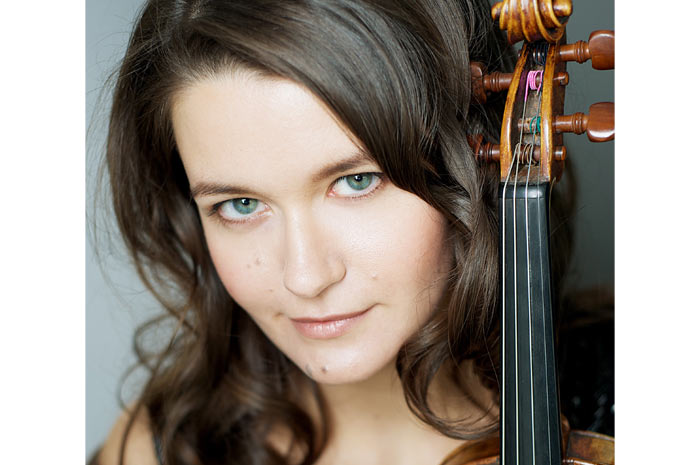SuperDARN marks 25 years
CANADA'S SPACE RADAR passed a major milestone in the fall of 2018.
SuperDARN (the Super Dual Auroral Radar Network) began 25 years ago with the activation of a radar site east of Saskatoon in 1993.
After some early glitches—the Saskatoon antenna array was almost immediately struck by lightning, while a load of transmitters bound for Iceland was nearly lost at sea—SuperDARN grew into a hugely successful global scientific collaboration.
SuperDARN is a network of radar sites that measures conditions in Earth’s upper atmosphere. The University of Saskatchewan’s Institute of Space and Atmospheric Studies is headquarters to the Canadian arm of the project and one of three original partners on SuperDARN, which now involves 11 countries and 36 sites around the world.
“What we’re trying to understand is how the solar wind interacts with the Earth’s atmosphere through the magnetic field,” explained Dr. Kathryn McWilliams (BSc’94, MSc’97), principal investigator of SuperDARN Canada and a professor in the Department of Physics and Engineering Physics.
Disturbances in the upper atmosphere can have serious consequences on Earth, such as damaging electrical infrastructure and disrupting communications. One of the ultimate goals of SuperDARN is to create a forecasting model that can predict such “space weather” events.
The 25 years of data generated by SuperDARN has brought scientists much closer to that goal.
“The more data we have, the more we can really dig into understanding the system, the physics and the chemistry behind what we observe,” said McWilliams.

College of Arts and Science launches plan to 2025
THE COLLEGE OF Arts and Science has launched an innovative new plan that will guide the activities and priorities of the University of Saskatchewan’s largest college for the next seven years.
Titled Think Big – Be Bold: Arts and Science 2025, the college plan is intended to be forward-looking and ambitious. Dean Peta Bonham-Smith noted those characteristics are reflected in the document’s title, which also serves as a call to action. Students, faculty and staff are encouraged to think big about big ideas and to be bold in bringing those ideas to fruition.
Bonham-Smith said the college plan is “very student-focused,” noting that putting students first is one of the plan’s four major college-specific commitments, together with diversity and equity in faculty and staff, excellence in research, scholarly and artistic work, and new curricula.
“Our plan embraces what we value as a college and as a university, and that is Indigenization, internationalization, interdisciplinarity and collaboration,” said Bonham-Smith.
The college’s new plan was officially launched on Nov. 21, 2018. For more information, visit the plan website: artsandscience.usask.ca/2025.
![Newly analyzed fossils show that some life on Earth was able to move about 1.5 billion years earlier than previously thought. [icon image] A. El Albani/IC2MP/CNRS - Université de Poitiers](images/News_Fossils.jpg)
Fossils show evidence of earliest moving creatures
RESEARCHERS AT THE University of Saskatchewan have helped uncover the earliest evidence ever found of organisms capable of movement.
In a paper published in February 2019, an international team of scientists reported the discovery of string-shaped fossils they believe to be trails left by tiny creatures that wriggled through mud 2.1 billion years ago. The discovery suggests that some lifeforms on Earth were able to move themselves about 1.5 billion years earlier than previously thought.
Dr. Luis Buatois and Dr. Gabriela Mángano, both professors in the geological sciences department of the College of Arts and Science, were co-authors on the paper.
“This is by far the most challenging material we have ever studied. As soon as we looked at the specimens, we realized what was at stake,” said Buatois.
The strange fossils forced the researchers to consider explanations that could rewrite large portions of the timeline of life on Earth. Similar structures have been found in rocks in the past, but the evidence they were made by very ancient lifeforms has never been as strong as this time, said Mángano. Using CT scans, the researchers were able to create highly detailed 3D reconstructions of the structures, and found “compelling” similarities to fossil burrows in younger rocks.
![[icon image] David Stobbe](images/News_Curriculum.jpg)
Arts and Science undergoes curriculum renewal
PROGRAM CHANGES UNDERWAY in the College of Arts and Science are the result of the first major college-wide curricular renewal process in 50 years.
Starting in 2020, students pursuing undergraduate degrees in the college will need to meet an English language writing requirement, an Indigenous learning requirement and a quantitative reasoning requirement to be eligible to graduate from the University of Saskatchewan.
“Our curricular changes set forth clearer and more flexible degree structures that will simplify degree pathways and better accommodate interdisciplinary programming,” said Dr. Gordon DesBrisay, vice-dean academic in the College of Arts and Science.
“In introducing three new degree requirements across all degree programs, the changes will also help lay firm foundations for the basic skills and cultural competencies our graduates need as they prepare to face the challenges and opportunities of the 21st century.”
While it’s the first time since 1968 that college-wide curriculum renewal has taken place, Dean Peta Bonham-Smith emphasized that Arts and Science programs are continually assessed and revised.
“Our departments are annually reviewing and refreshing their program curricula,” she said.
A decade in the making, the new changes are the result of a curricular renewal process that started in 2008.
![Gold pins were presented to College of Arts and Science students and recent alumni in recognition of their academic achievements. [icon image] Christopher Putnam](images/News_Pinning.jpg)
College of Arts and Science holds inaugural Pinning Ceremony
ON JAN. 16, 2019, College of Arts and Science students named to the Dean’s List and award-winning new alumni were recognized for their academic achievements at a special event at Convocation Hall.
As friends, family members, faculty, staff and others looked on, honourees were given specially designed gold college pins by Dean Peta Bonham-Smith and other members of the college’s Dean’s Executive.
Caid Brossart, one of the Dean’s List students who received a pin, said the event was meaningful for him. He believes the new tradition is a way to strengthen a sense of college identity.
“I think it’s nice to take pride in your work,” Brossart added.
The Dean’s List includes students with averages in the top five per cent of each program type in the College of Arts and Science. In addition to students on the Dean’s List, the college’s inaugural Pinning Ceremony celebrated distinguished new alumni who received awards during convocation in 2018.

Social impacts of oilsands poorly understood, study finds
DECADES OF RESEARCH into Canada’s oilsands have failed to give a clear picture of how industrial development has affected the region’s Indigenous Peoples, according to a study by University of Saskatchewan researchers.
A “crisis of confidence” about the industry has left the people most impacted by oilsands development feeling ill-informed and powerless, concluded the authors of the study published in the journal Human Ecology in February 2019.
“I think people will be surprised to learn this is an under-studied area. The level of research on the oilsands might not be what people think it is,” said Dr. Clinton Westman, an environmental anthropologist in the College of Arts and Science.
The study by Westman and Dr. Tara Joly is the most comprehensive review ever conducted of social science research about Canada’s oilsands.
Examining research published in the 1990s through to the present day, the authors found a shortage of credible studies that assess and monitor the impacts of oilsands development on Indigenous communities. These impacts include health risks, damage to food and water sources, and loss of access to places of cultural or spiritual significance.
The social benefits of oilsands development—including jobs, business spinoffs and compensation payments to Indigenous communities—are also poorly documented, the study concluded.

Arts&Science magazine wins silver award
THE SPRING 2018 edition of Arts&Science, produced by the College of Arts and Science’s communications office, has been recognized by the Council for Advancement and Support of Education (CASE). As part of the CASE District VIII 2019 Recognition Program, Arts&Science received the silver award in the category of Fundraising, Special Event and Other Communications: Low Budget Publication. CASE District VIII includes Western Canada and the U.S. Pacific Northwest.

The Woman and the Wolf
THE BREAK, Katherena Vermette’s novel about the aftermath of a violent crime in Winnipeg’s North End, was the 2018/19 Arts and Science Book Club selection. The cover art for this award-winning book was created by Métis artist Corinna Wollf, an alumna of the College of Arts and Science (BA’96, BFA’14, MFA’16). Titled The Woman and the Wolf, the original drawing is a life-sized depiction of a fictional woman named Sohkahcahkwew (“she has a strong soul”) standing with a wolf.
Arts&Science spoke to Wollf by email about the artwork. This interview has been edited for length.
What did you have in mind as you were creating the drawing?
C.W.: During the creation of this work, I was researching Métis identity from a visual perspective. I was looking closely at the work of numerous contemporary Métis artists as well as old photos from my mom’s side of our family. In those photos, several women—my ancestors—took the stance that you see Sohkahcahkwew in: a strong stance with one hand on the hip and the other closed in a fist at the side, looking directly at the camera.
All of the flowers and symbols on the dress and the wolf are related to my own personal history and experiences. For example, the wild rose on the chest was my grandmother’s favourite flower and the leadplant on the skirt was in honour of my grandfather, who was a WWII veteran. The dandelion in Sohkahcahkwew’s hand is a reference to the Métis, who were historically known as the road allowance people.
How do you feel about having your art on the cover of The Break?
C.W.: After reading the publisher’s draft of The Break, I knew that I wanted my artwork on the cover. Having spent my adolescent years in the Saskatoon inner city, I felt a kinship with the characters in the book. From Vermette’s descriptions of Winnipeg’s North End, I could understand that it was very similar to what I knew as a teenager. The book is difficult and heartbreaking, but at the same time hopeful and inspiring. I understood it would be an important work and I felt privileged to contribute to it in this way.

First holder of David L. Kaplan Chair in Music appointed
DR. VÉRONIQUE MATHIEU is the first holder of the David L. Kaplan Chair in Music.
Mathieu, who took up the position on July 1, 2018, will focus on training undergraduate and graduate violin students, deepen the Department of Music’s connection with the community, including the Saskatoon Symphony Orchestra, and enhance the international reach of the university’s musicians.
The position was made possible by a $2-million donation from College of Arts and Science alumni Xiaoping (Bob) Xu (MA’92, LLB’17) and Ling Chen (MA’90) and was named in honour of their former music professor.
Mathieu has performed as a soloist and a chamber musician throughout Asia, Europe and South America, as well as South Africa, the United States and Canada. She is a prize-winner of the Eckhardt-Gramatté Contemporary Music Competition (2012) and the Krakow International Contemporary Music Competition (2010), and is a three-time winner of the Canada Council Bank of Instruments Competition.
![The northern lights are seen over the Saskatoon SuperDARN radar site. [icon image] Ashton Reimer](images/News_SuperDarn.jpg)